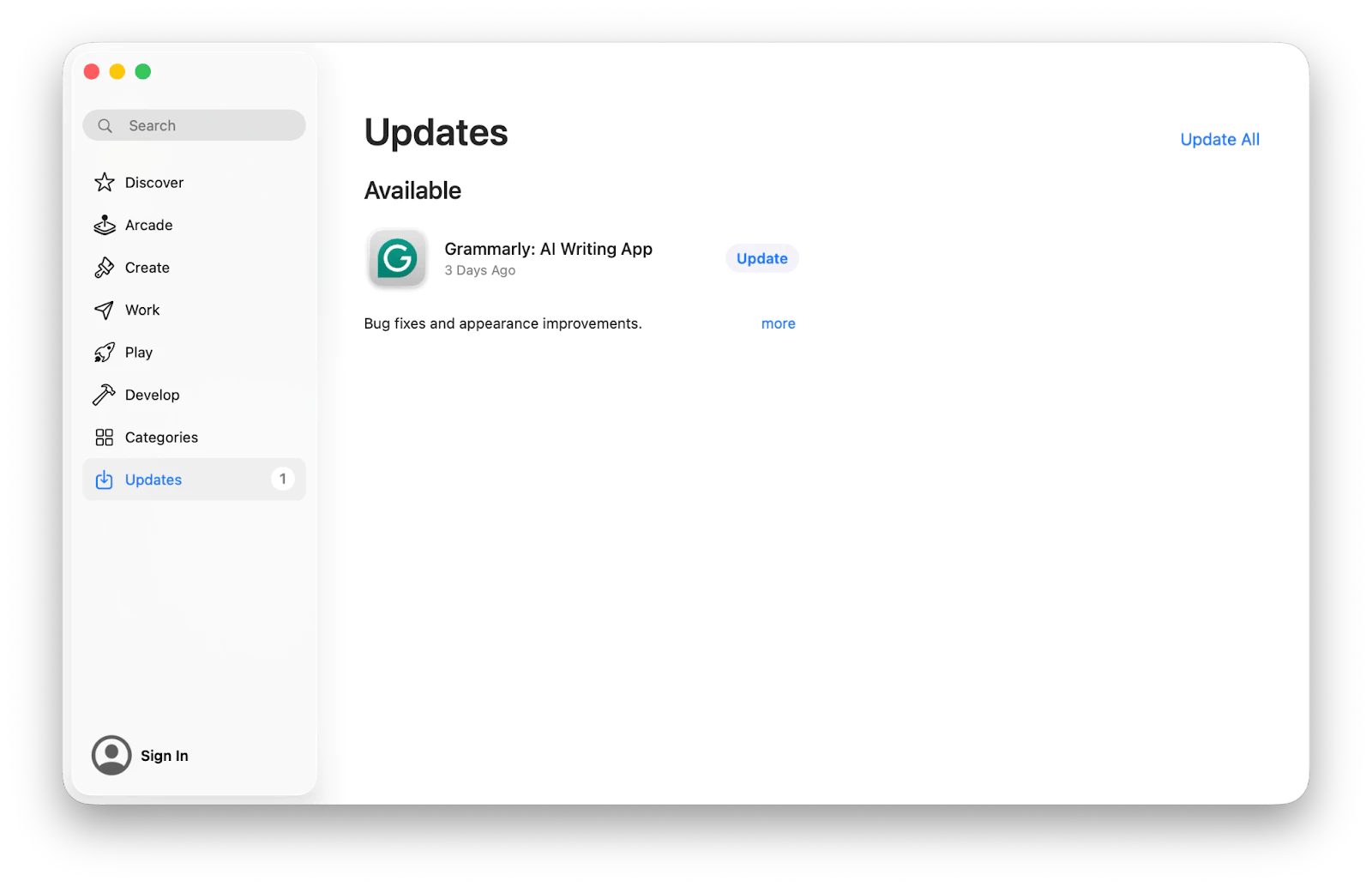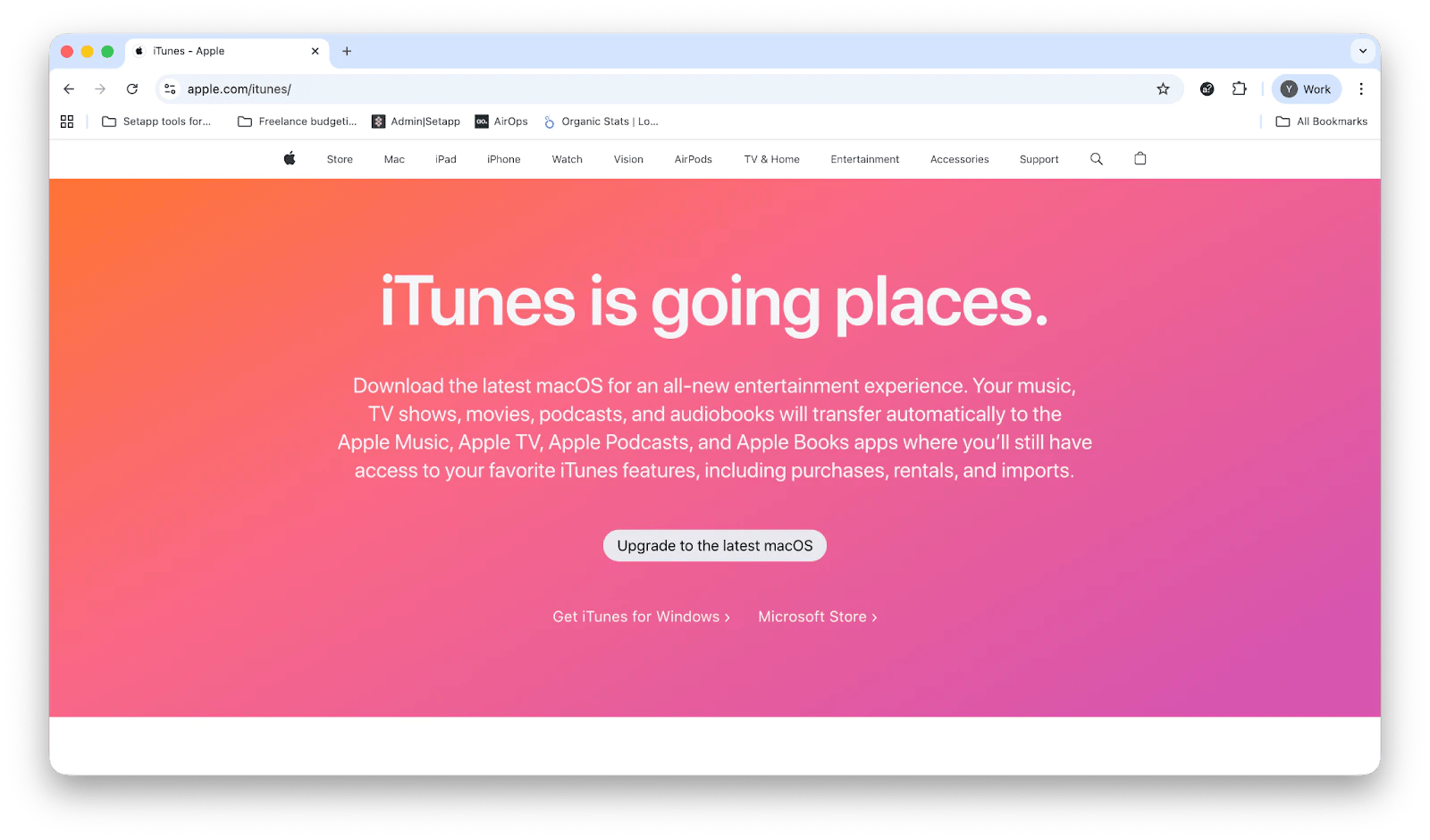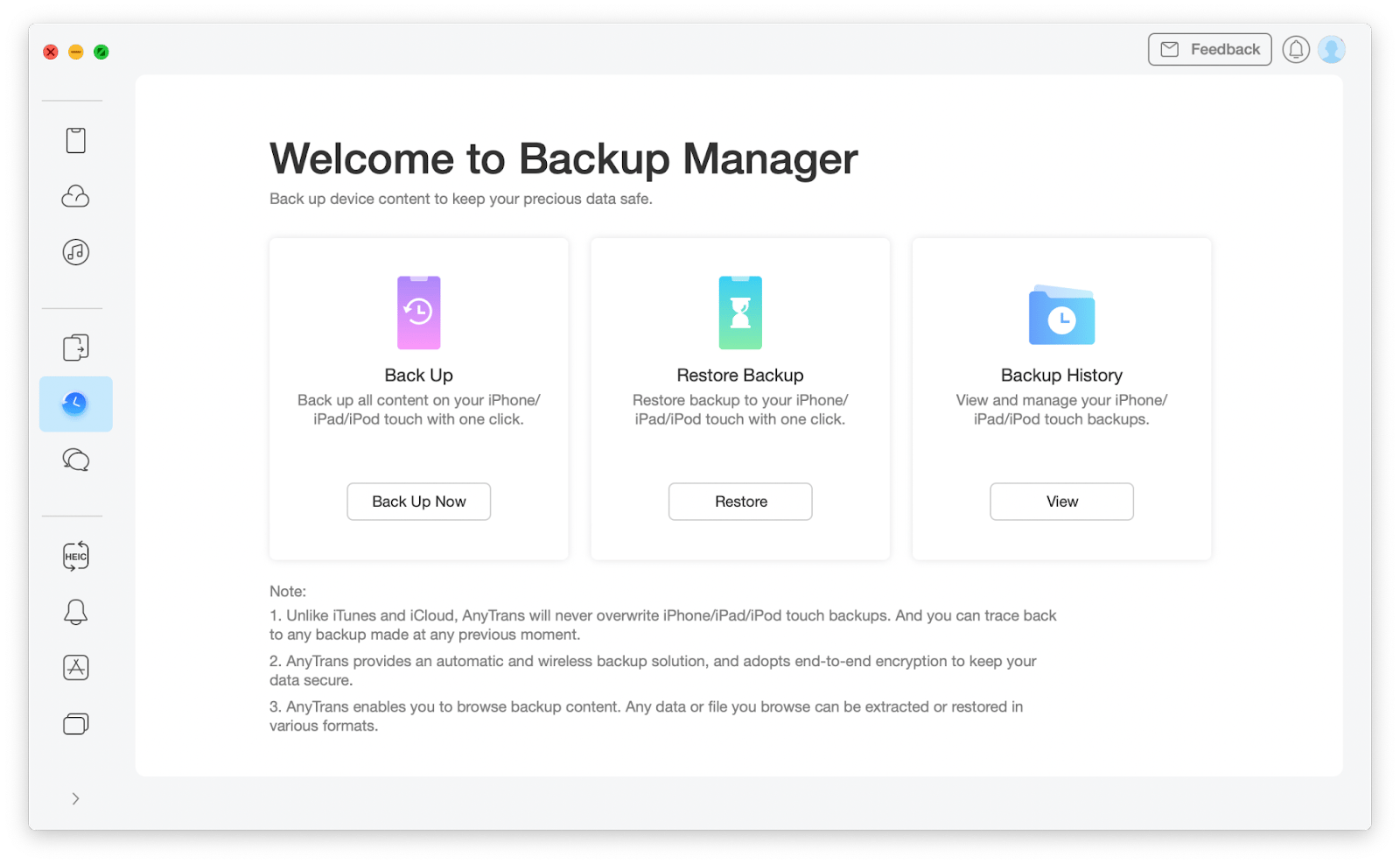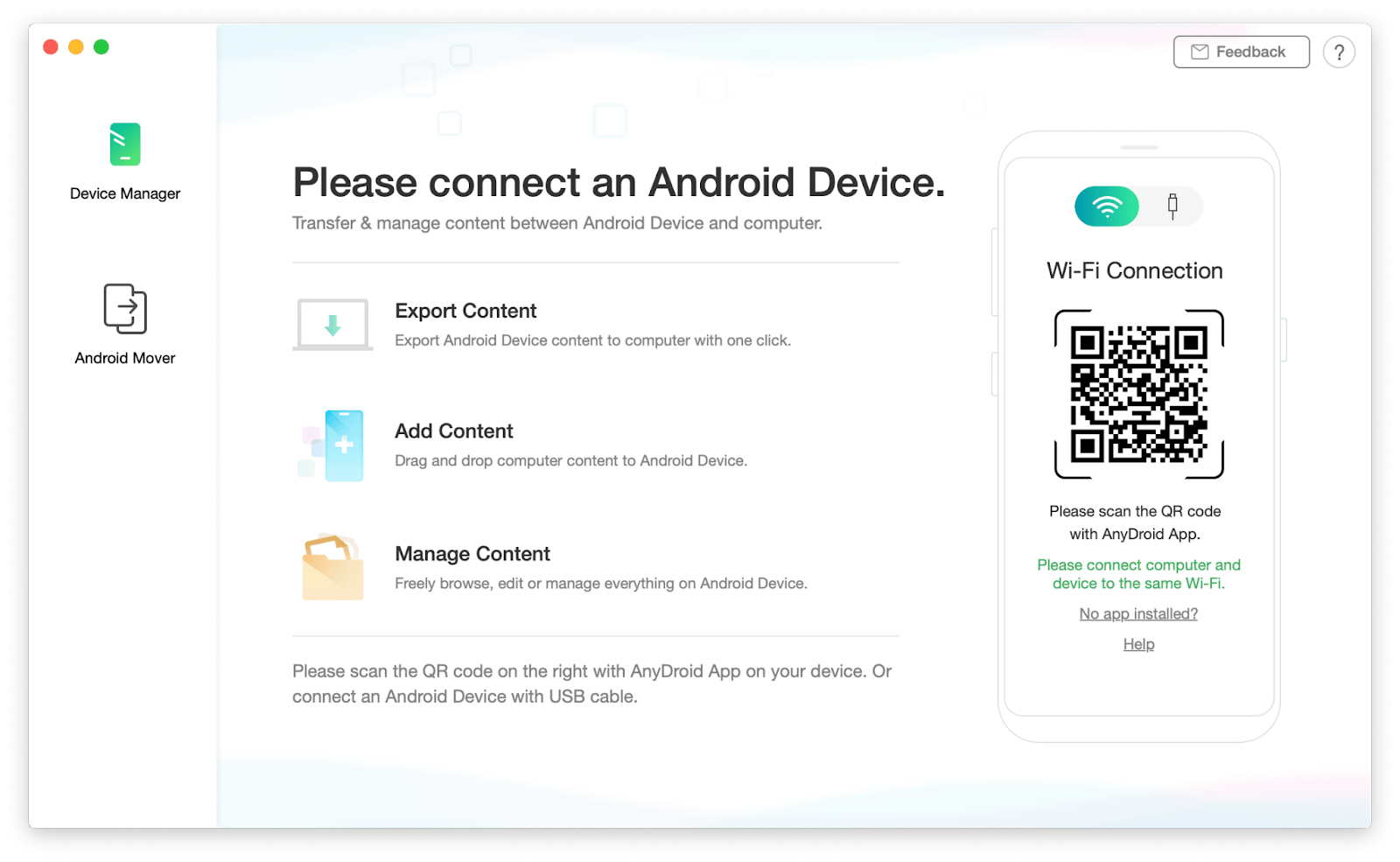How to update iTunes on a Mac to the latest version
- iTunes no longer exists on modern Macs.
Starting with macOS Catalina (10.15), iTunes was replaced by separate apps: Music, Apple TV, Apple Podcasts, and Apple Books, which handle all media library and store functions. - Updating iTunes depends on your macOS version.
For macOS Mojave or earlier, you can update iTunes via the app itself or the App Store. On newer macOS versions, updating the system updates the replacement apps automatically. - Latest iTunes version for older macOS is 12.8.3.
This version is included with macOS Mojave and is available for macOS 10.11.4 through 10.13. Earlier macOS versions remain on the newest iTunes build they support. - Syncing and backups are easier with Setapp apps.
Apps like AnyTrans for iOS and AnyDroid simplify transferring music, photos, and other files across Apple and Android devices, providing a smoother workflow than iTunes alone. Get a 7-day free trial to try the apps and 260 more.
In 2019, Apple discontinued iTunes and replaced it with separate apps. On modern macOS versions (Catalina and later), iTunes no longer exists as a standalone app. Instead, Apple replaced iTunes for Mac with Music, Apple TV, Apple Books, and Apple Podcasts, which together handle the media library and store functions that used to live inside iTunes.
Updating these apps is the modern equivalent of updating iTunes for Mac, and I’ll show you how.
Need a quick fix for your Mac? Use the Fix My Mac GPT assistant to find the best solutions and apps to do the job.
Update iTunes within the app
There are several ways to refresh iTunes. The fastest is right inside the app.
On a Mac that still has iTunes (macOS Mojave or earlier):
Open iTunes.
In the menu bar at the top of the screen, click Help.
Choose Check for Updates.
Follow the on-screen instructions to download and install the update.
Check the App Store for updates
On newer versions of macOS, iTunes has been replaced by the Music app, which is updated automatically with regular macOS and App Store updates.
To update iTunes manually via App Store:
Open the App Store.
Go to the Updates tab, and click Update for the iTunes or macOS updates you see.
If no iTunes update appears, your version is likely already up to date for that macOS release.

Download the update from Apple’s website
Apple no longer offers standalone iTunes installers, so downloading an update directly from the website is no longer an option.

To keep iTunes or its replacement apps up to date, Apple now requires updating macOS itself. Installing the latest macOS version automatically updates Apple Music, Apple TV, Apple Podcasts, and Finder’s device-syncing tools — the modern equivalents of iTunes.
Here’s a detailed guide on how to update macOS the right way.
Read also:
Automatically sync Mac, iPhone, and Android
Keeping your library in sync is the easiest way to protect it. To sync up your files:
Create a backup
Transfer files to an external hard drive
Directly create a link between your computer and device, manually moving the files
Tools like AnyTrans for iOS from Setapp can automate the process, letting you transfer music, photos, and other files across your devices without the extra work.
To sync files between Apple devices:
Install and open AnyTrans for iOS.
Connect your iOS device to your Mac with a USB-C cable.
When connected, click the Backup Manager tab.
Click Back Up Now and follow the instructions.

While AnyTrans works great for transferring files between iOS and macOS, its counterpart, AnyDroid, helps you manage your Android content with the same ease. Move files from Android phone to iPhone or iPad, from Android to Android, from Android to Mac, and vice versa.

Is iTunes still available on macOS Catalina or later?
No. Starting with macOS Catalina (10.15), Apple retired iTunes in favor of separate apps like Music, Apple TV, and Apple Podcasts. So all former iTunes features now live inside these updated apps.
Why should I update iTunes on my Mac?
Keeping iTunes up to date ensures you have the most stable, compatible version available for your macOS.
On older Macs that still use iTunes, updates fix bugs, improve syncing, and keep your media library running smoothly. If you’re on macOS Catalina or later, iTunes no longer exists. Apple replaced it with Apple Music, Apple TV, and Apple Podcasts, which update automatically through macOS.
Updating your system is the modern way to keep all former iTunes features current.
Update iTunes on Mac: Final words
iTunes on Mac no longer exists on modern devices, so keeping your media tools up to date simply means updating macOS. On older systems that still have iTunes, you can update it through the app or the App Store, but the newest supported version is 12.8.3.
For seamless syncing and backups across Apple devices (or when connecting Android to your Mac), apps like AnyTransfor iOS and AnyDroid offer an easier, more reliable workflow.
Both AnyTrans and AnyDroid are available with a free week-long trial through Setapp, which lets you try over 260 Mac and iPhone apps under one subscription. It’s a great way to explore different tools and find the best match for your needs.
FAQ
How do I update iTunes on my Mac?
If your Mac is running macOS Mojave or earlier, you can update iTunes through iTunes > Help > Check for Updates or the App Store. On macOS Catalina or later, iTunes no longer exists. Updating macOS automatically updates the Music, TV, Podcasts, and Finder tools that replaced it.
Why can't I download the latest version of iTunes on my Mac?
Apple discontinued iTunes for Mac in 2019, so newer macOS versions don’t support it. If your Mac runs Catalina or later, you won’t be able to download or install iTunes.
How do I get the latest iTunes update?
If you’re using macOS Mojave or earlier, the latest iTunes update appears in the App Store or through Check for Updates inside the app. Macs on newer macOS versions receive updates through system updates instead, since iTunes has been replaced.
Can my Mac be too old to update?
Yes. Older Macs eventually stop receiving major macOS upgrades. If your Mac can’t update past Mojave, you’ll stay on the last supported iTunes version for that OS.
How to download an iTunes update manually?
Manual downloads are no longer available. Apple no longer offers standalone iTunes installers, and updating iTunes now requires updating your Mac to the latest macOS version your device supports.
Which is the latest version of iTunes for Mac?
As of 2025, the latest iTunes version for macOS is iTunes 12.8.3, available for macOS Mojave and downloadable for macOS 10.11.4 through 10.13.
Is it advisable for me to upgrade to macOS Tahoe on my 2020 MacBook Pro M1?
Yes. The 2020 MacBook Pro M1 handles macOS Tahoe, and updating gives you better performance, improved stability, and the latest security features. If you rely on older apps or plug-ins, check compatibility before upgrading.





